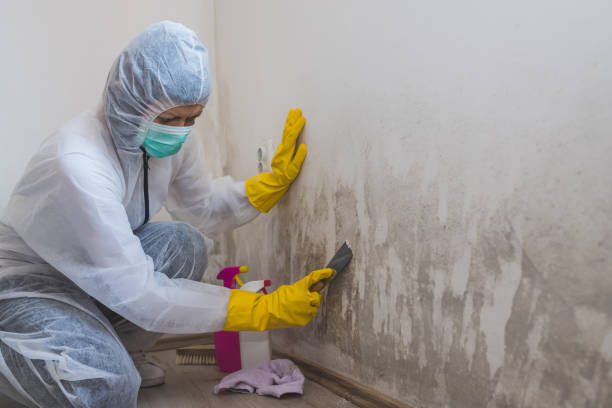Discover the hidden culprits behind the widespread black mold problem in the New York area. As residents and property owners grapple with the persistent issue, it is essential to understand the primary causes of this hazardous mold infestation. From leaky roofs to high humidity levels, numerous factors contribute to the growth and spread of black mold.
In this comprehensive article, we delve into the most common sources of black mold in New York, providing valuable insights for homeowners and renters alike. We explore how water damage resulting from plumbing leaks, flooding, or condensation can create the perfect breeding ground for mold spores. Additionally, we uncover the impact of poor ventilation, excessive moisture, and inadequate insulation on mold growth. By understanding these underlying causes, individuals can take proactive measures to prevent the recurrence of black mold and safeguard their health and property.
Stay tuned as we break down the primary triggers of black mold in New York and equip you with the knowledge to combat this persistent problem. Don’t let black mold take over your home – empower yourself with the information you need to eradicate it once and for all.
The dangers of black mold
Black mold, also known as Stachybotrys chartarum, is a type of toxic mold that can have severe health implications for individuals living in affected environments. Exposure to black mold can lead to a range of health issues, including respiratory problems, allergic reactions, skin irritation, and even neurological symptoms. The presence of black mold in a property is a cause for concern, and it is crucial to identify and address the underlying causes to prevent further damage.
Black mold thrives in damp and humid conditions, making certain areas more susceptible to its growth. By understanding the primary causes of black mold, individuals can take proactive measures to prevent its occurrence and protect their health.
Common causes of black mold in New York
High humidity and moisture levels
One of the primary triggers for black mold growth is high humidity and excessive moisture levels. New York’s climate, with its hot and humid summers, creates an ideal environment for mold to thrive. When indoor humidity levels exceed 60%, it provides the perfect breeding ground for mold spores. Bathrooms, kitchens, and basements are particularly prone to high humidity due to the presence of water sources and inadequate ventilation.
To combat high humidity, it is essential to use dehumidifiers and ensure proper ventilation in these areas. Installing exhaust fans and opening windows can help regulate moisture levels and prevent the growth of black mold. Additionally, using air conditioning units and maintaining indoor humidity levels below 50% can significantly reduce the risk of mold infestation.
Water damage and leaks
Water damage resulting from plumbing leaks, roof leaks, or even small drips can create an environment conducive to black mold growth. In New York, where heavy rain and snowfall are common, properties can be vulnerable to water intrusion. Leaky pipes, faulty plumbing fixtures, and aging roofs can lead to hidden moisture buildup, providing a perfect breeding ground for mold spores.
Regular inspections and maintenance of plumbing systems and roofs are crucial to identifying and addressing potential water damage before it becomes a breeding ground for mold. Promptly fixing leaks, repairing damaged roofs, and ensuring proper drainage can go a long way in preventing black mold infestation.
Poor ventilation and air circulation
Inadequate ventilation and poor air circulation contribute to the growth and spread of black mold. Areas with stagnant air, such as closed-off rooms or poorly ventilated bathrooms, can trap moisture and promote mold growth. Insufficient air circulation can also lead to condensation on windows, walls, and ceilings, creating a damp environment that encourages mold spores to multiply.
To improve ventilation and air circulation, it is essential to open windows regularly, use exhaust fans, and invest in air purifiers. These measures help remove stale air and promote the flow of fresh air, reducing the risk of mold growth.
Flooding and water intrusion
Flooding events, whether caused by heavy rains or plumbing mishaps, can have devastating consequences for property owners. Flooding not only damages belongings but also creates an environment where black mold can thrive. When water intrusion occurs, it is crucial to address the issue promptly and thoroughly dry affected areas to prevent mold growth.
In the event of a flood, it is essential to remove standing water as soon as possible and employ professional water extraction services if necessary. Thoroughly drying the affected areas, including carpets, walls, and furniture, is crucial to preventing mold growth. Additionally, using dehumidifiers and fans can aid in the drying process and minimize the risk of mold infestation.
Lack of proper maintenance and cleaning
Neglecting regular maintenance and cleaning tasks can contribute to black mold growth in New York homes. Accumulated dust, dirt, and organic matter provide nutrients for mold spores to thrive. Failing to address small leaks or ignoring signs of water damage can also lead to the growth and spread of black mold.
Regular cleaning routines, including dusting, vacuuming, and wiping surfaces, can help prevent the buildup of mold-friendly environments. Additionally, promptly addressing any signs of water damage, such as stains or discoloration on walls or ceilings, can prevent the spread of mold spores.
Identifying black mold in your New York home
Identifying black mold in your New York home is essential to take appropriate action and protect your health. Black mold often appears as black or dark green patches with a slimy texture. It thrives in areas with high moisture levels and can be found in bathrooms, kitchens, basements, and other areas prone to water damage.
If you suspect black mold in your home, it is advisable to hire a professional mold inspector who can conduct a thorough assessment and provide accurate identification. Professional testing can determine the type and extent of mold infestation, guiding homeowners in developing an effective remediation plan.
How to prevent and remove black mold in New York homes
Preventing and removing black mold requires a combination of proactive measures and professional assistance. Here are some steps you can take to prevent black mold infestation:
- Maintain proper ventilation and air circulation by regularly opening windows, using exhaust fans, and investing in air purifiers.
- Monitor and control indoor humidity levels using dehumidifiers and air conditioning units.
- Conduct regular inspections of plumbing systems, roofs, and other potential sources of water damage to identify and address issues promptly.
- Clean and dry any spills or leaks immediately, ensuring no moisture is left behind.
- Regularly clean and dust your home, paying attention to areas prone to moisture, such as bathrooms and kitchens.
- Promptly address any signs of water damage, including stains, discoloration, or musty odors.
- Seek professional assistance for proper mold remediation if black mold is present in your home.
By following these preventive measures and taking prompt action when necessary, you can significantly reduce the risk of black mold infestation in your New York home.
In conclusion, the primary causes of black mold in New York include high humidity levels, water damage and leaks, poor ventilation, flooding, and lack of proper maintenance and cleaning. Recognizing these triggers and implementing preventive measures can help homeowners and renters combat black mold and protect their health and property. Remember, early detection and proactive action are key in preventing the recurrence of black mold.





No comment yet, add your voice below!